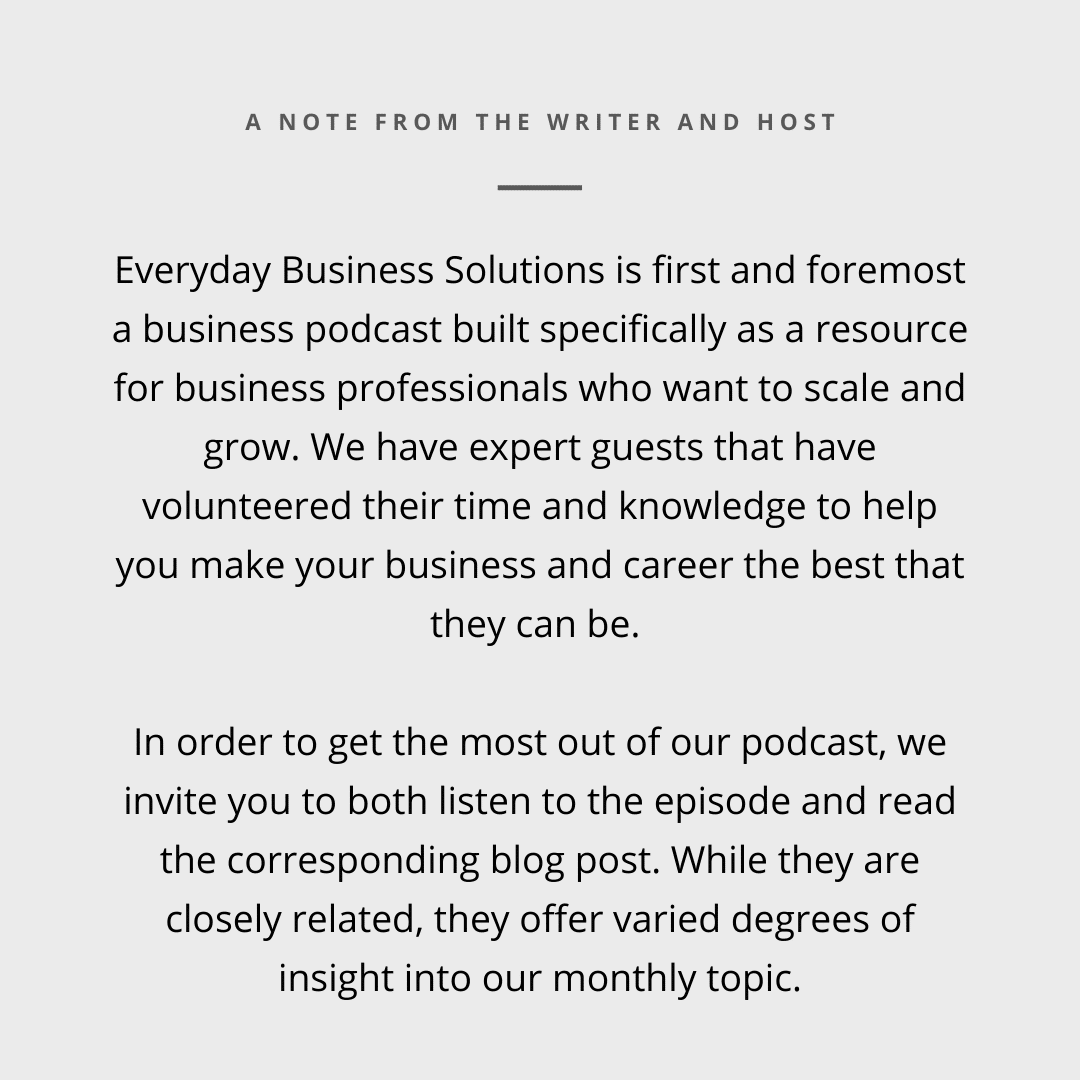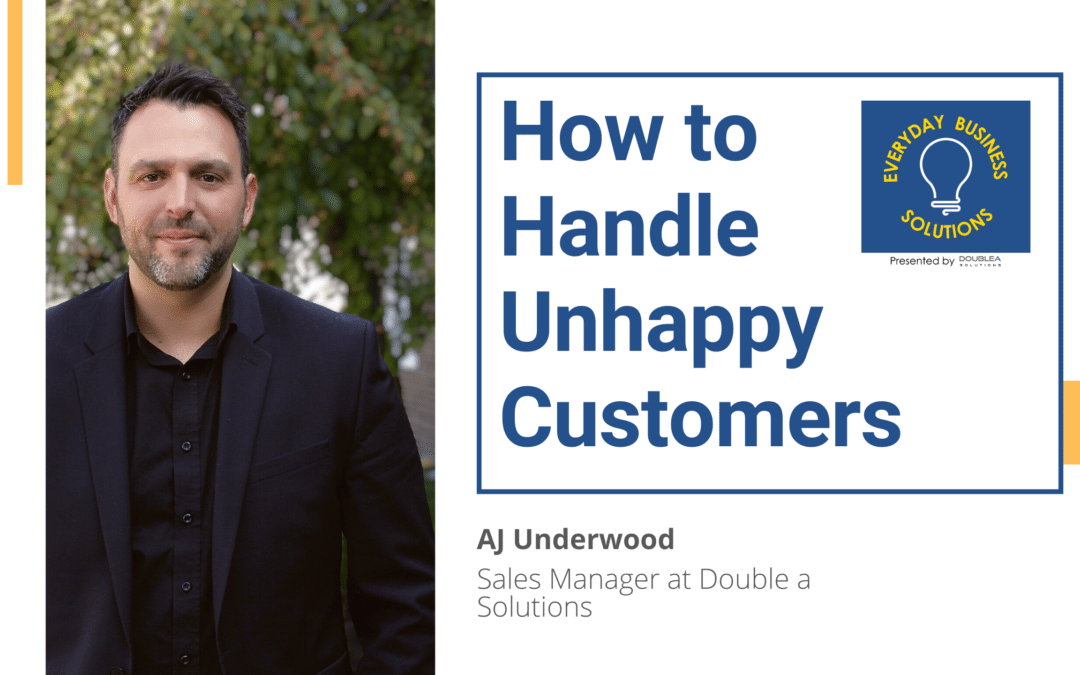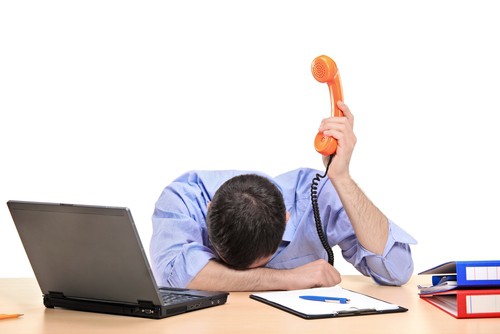Audio Version
Podcast Transcription
Video Version
Unhappy customers can be a difficult hurdle for any business, but we’ve put together a few tips to help you handle them.
An Unhappy Customer
No matter how great your business and how dedicated your team is, you cannot please everyone. You will have unhappy customers.
You will have people who don’t like the product or service. Your customer service can’t be impeccable all of the time. You may even make a mistake that you couldn’t see coming. Your customer might even just be having a bad day.
How you prepare for and respond to situations where customers are less than satisfied can make it or break it for your business.

Be Proactive
In a perfect world, diligence and preparedness mean that business goes off without a hitch every time. In the real world, we know this is definitely not the case, but by being proactive you can set your business up to better respond to any situation and to limit the number of unsavory ones that occur.
Having a great product or service is naturally a great way to be proactive. Work out the kinks in your design and processes wherever possible.
However, you didn’t start your business to sell people something they wouldn’t like or need. A study by Corra shows that only 31.4 percent of customer complaints actually have to do with a product. 16.6 percent have to do with policy and 52 percent come from some form of bad customer service.
What does this mean?
It means that almost 70 percent of your bad reviews evolve from human error (yes, we’re accrediting policy to human error since humans wrote that policy). It also means, that to improve your reviews, you should be training your team members, both the customer-facing roles and the policymakers to understand consumer demands and handle hectic situations better.
Also, consider how well-versed your employees are in the subject matter they’re responding to. Can they be better trained to avoid saying something inaccurate? Do they know how to respond when they don’t know something or are not the right person to handle a question?
Well-thought-out and ongoing training goes a long way in ensuring your team is ready to handle almost anything.
Responding to the Customer
So you’ve been proactive and you still get a customer who complains?
First, that’s life. It’s not the end of the world, so take a deep breath and absolutely do NOT react right away.
Photo Credit: UpCounsel
Your first response is likely to be emotionally driven and not thought out. The last thing you want to do when receiving a complaint is to escalate the situation by making it worse. You also don’t want to try to resolve an issue in front of an audience, so if the complaint comes in the form of an online review, social media message, or even in the middle of your store, don’t resolve it there.
The first thing is to assess the situation from what you know and can gather internally. Then acknowledge the customer and apologize where they addressed you. After that redirect the conversation to a private setting where you can gather more information and resolve the problem in an appropriate manner.
You may still not be able to resolve the situation in a manner that makes the customer happy, but the majority of the time you can do something to alleviate any grievances and ensure that your brand reputation is maintained.
Responding to the Employee
If there’s an unhappy customer, there’s usually at least one employee involved somewhere, whether they were part of the cause or just received the brunt of the customer’s frustration. You have to respond to the employee or employees involved.
First, consider if the employee is at fault and the level of severity of the situation. If an employee was aggressive or rude to a customer then disciplinary action is likely necessary, but if it was an honest mistake or they weren’t at fault, then you should be empathetic to the employee. We’ve all been there, done that.
The best environment to create both for your team’s sake and even your customers’ is that of learning. Don’t talk down to the team member or belittle them for their mistake. Instead, find a way to include them in the resolution and to help them learn from what happened. It may be helpful to reinforce training if they need it, but sometimes involving them in the situation is enough.
In order to create a learning environment, you want employees to feel comfortable coming forward with their troubles, be able to admit when they don’t know something, and bring up mistakes they’ve made. Trust is key and if you respond poorly to your employee when handling an unhappy customer, you could easily destroy that trust.
Long-Term Impact
Sometimes issues arise that are easily dealt with and are one-time occurrences. You don’t necessarily need to change a process or retrain staff because of one bad day, but sometimes there are underlying issues that need to be addressed.
Recurring complaints or feedback from customers that revolve around the same or similar issues should be addressed to avoid long-term problems. Maybe you need to update a product or service to better meet demand.
For example, Double A Solutions will add or update features to our software to better accommodate our customer’s needs. Of course, We also frequently make small adjustments so everything works smoothly and is secure.
You may need to change your processes so you connect to customers more effectively. We’ve found that some customers prefer to text so we utilize the texting feature of our VoIP phone system, Aline, to reach customers who used to be elusive.
Lastly, make sure you’re following up frequently enough to know how your customers feel about their services or the product without annoying them. You need to keep them appraised of changes in what you provide, especially if it impacts them directly.
In Conclusion
Negative customer reviews and feedback can be alarming, but by being prepared and thinking before you respond you can save yourself and your team a lot of headaches.
You may even turn a negative situation into a positive for your company, whether that means making changes that are good for your business, learning more as a team, or even building a better relationship with an existing customer.
About Our Guest:

AJ Underwood
Sales Manager - Double A Solutions
AJ Underwood is the sales manager for Double A Solutions. He joined our team two years ago from the airline industry and despite the big leap, has done an amazing job of adapting. In fact, we have grown tremendously over the last two years as we learn better ways to connect to our customers.
Double A Solutions is home to Aline Phone Systems, Blitz Sales Software, Call Logic, and Janitorial Manager. We build software solutions to help automate manual business processes and elevate the work of other professionals across various industries. From customer-focused systems to your phone, we strive to think of the best ways we can make everyone’s work-life better and more effective.
Enjoy Listening To How To Have A Proper Work Life Balance on Everyday Business Solutions?
Click Here To Subscribe On Your Favorite Platform!




